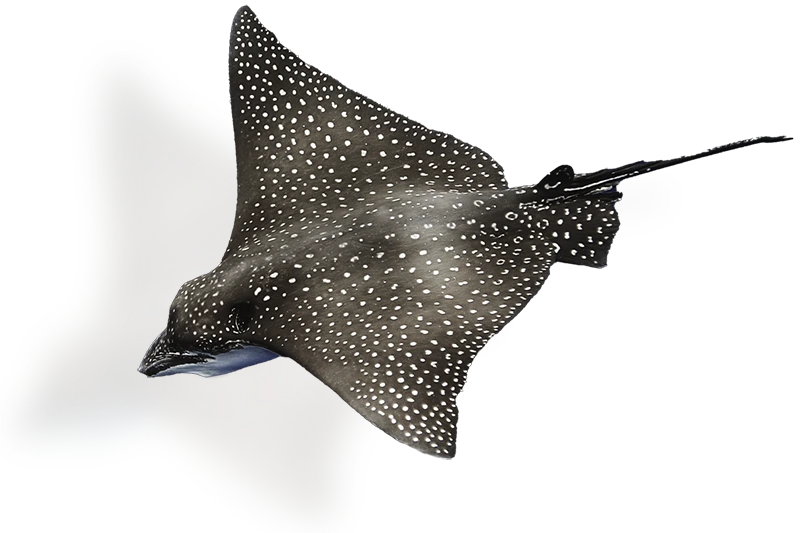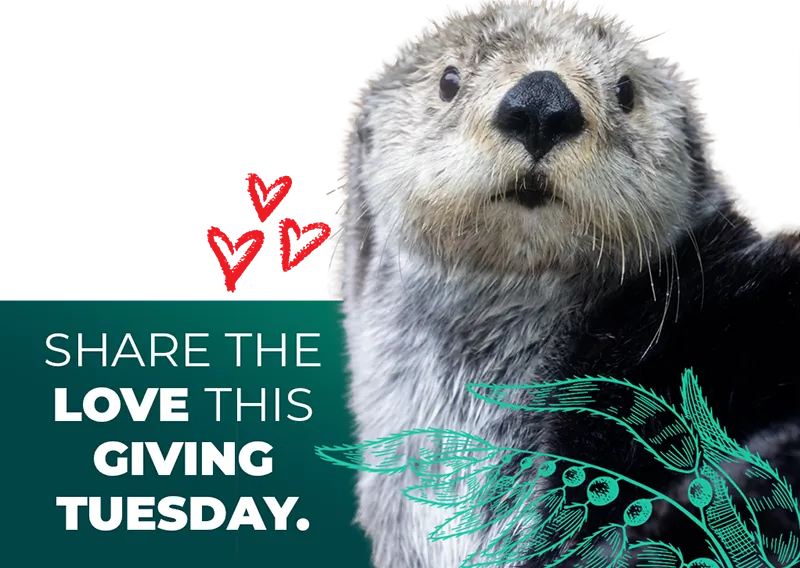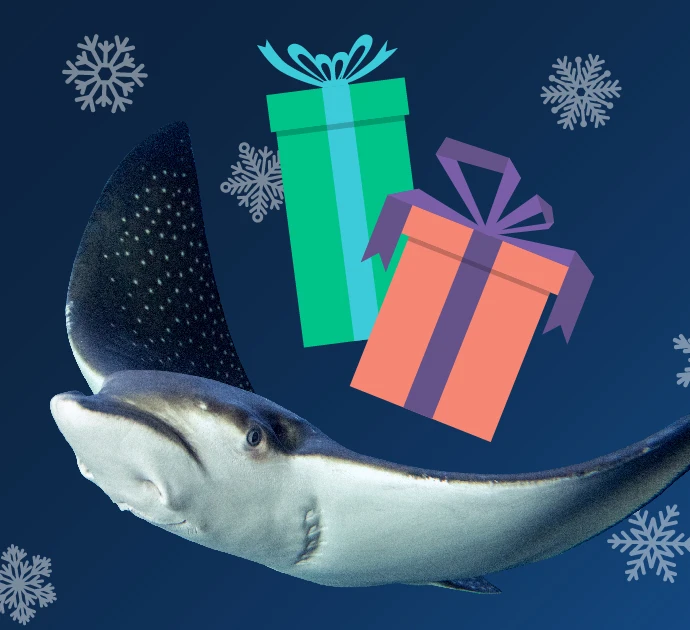The Seattle Aquarium’s latest SEAlebrities are an interesting bunch. Some hide right before our eyes; others stand out in flashy colors. Then there are those that just love to play! Sounds like some people you know, right? Let’s meet them.
Giant wrymouths: mysterious and reclusive
There are four recognized species in the wrymouth family. At over 5½ feet in length, Cryptacanthodes giganteus is the largest. (Regular wrymouths grow to around 3 feet, dwarf wrymouths to 1 foot.) With their long, narrow bodies, giant wrymouths are easily mistaken for eels. The big clue? Pectoral fins, which are characteristic of fish and not eels.
Here are two ways they’re just like us!
They like a safe, cozy home.
Giant wrymouths build their homes in the northeast Pacific Ocean, from the Bering Sea off the coast of Alaska to Humboldt Bay in California. They burrow into the soft ocean floor with just their heads peeking out—hiding in plain sight from hungry seals and sea lions.
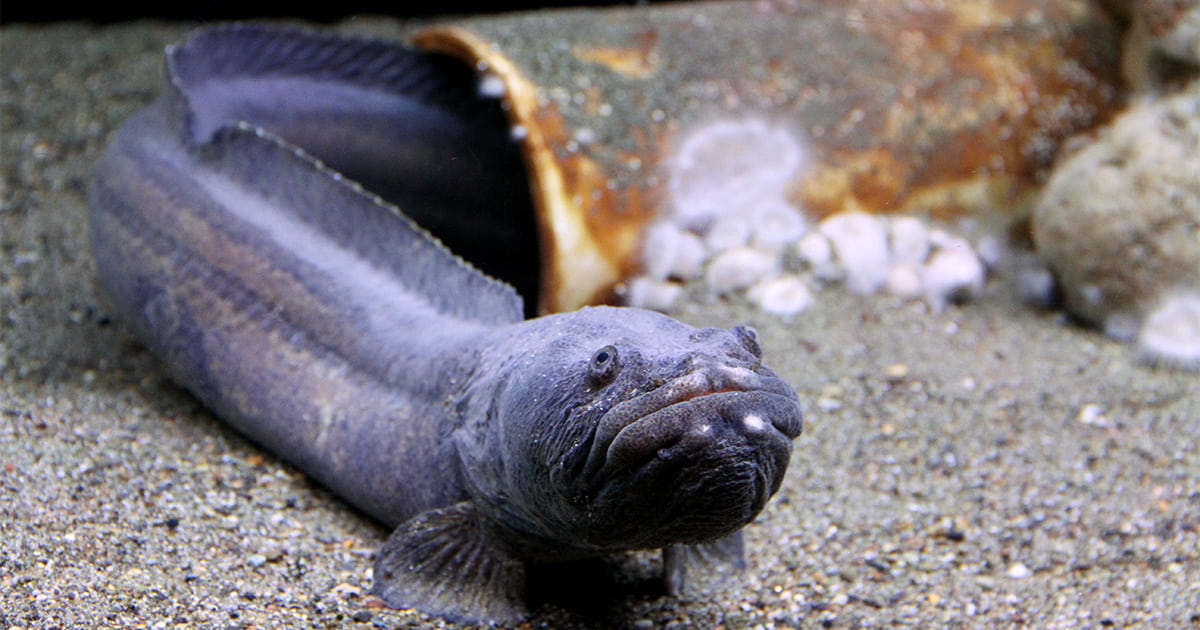
They love snacks.
It is thought that giant wrymouths live most of their lives in the sand. Only tasty treats like crustaceans and invertebrates—or a special delivery by feeding pole, as shown in the photo taken at the Aquarium—can coax them out of their cozy burrows.
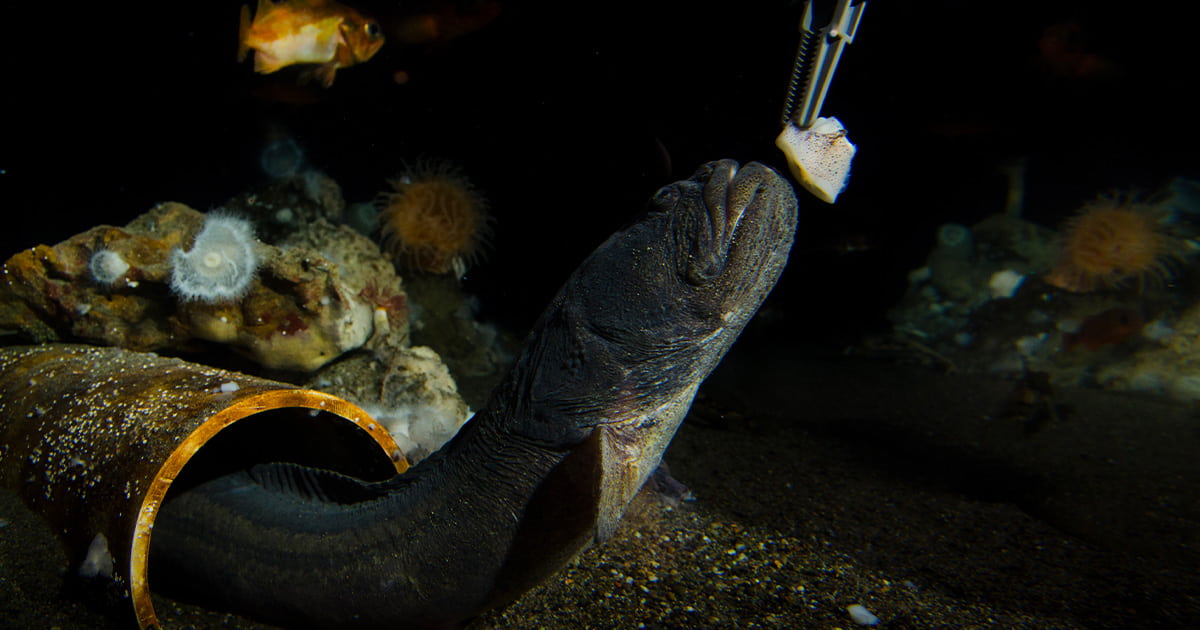
Meet Belle, a giant wrymouth in our care. Look for Belle in our Puget Sound Fish habitat on your next visit to the Aquarium!
Whitespotted boxfish: what a body!
Whitespotted boxfish, Ostracion meleagris, are found throughout the Pacific and Indian oceans, where they make their homes in reef ecosystems. Although small, growing to less than 10 inches, their busy patterns and vibrant colors attract a lot of attention. Luckily, they have two sneaky ways of remaining safe from predators.
Here are two ways they’re just like us!
They protect their core valuables.
The whitespotted boxfish wields some invisible survival tools. Their body is built on a frame made of thickened and fused scale plates—a kind of armor—that protects their internal organs and gives them their characteristic shape. If a predator gets too close, the whitespotted boxfish turns on the slime, secreting poisonous mucus to repel or kill them.
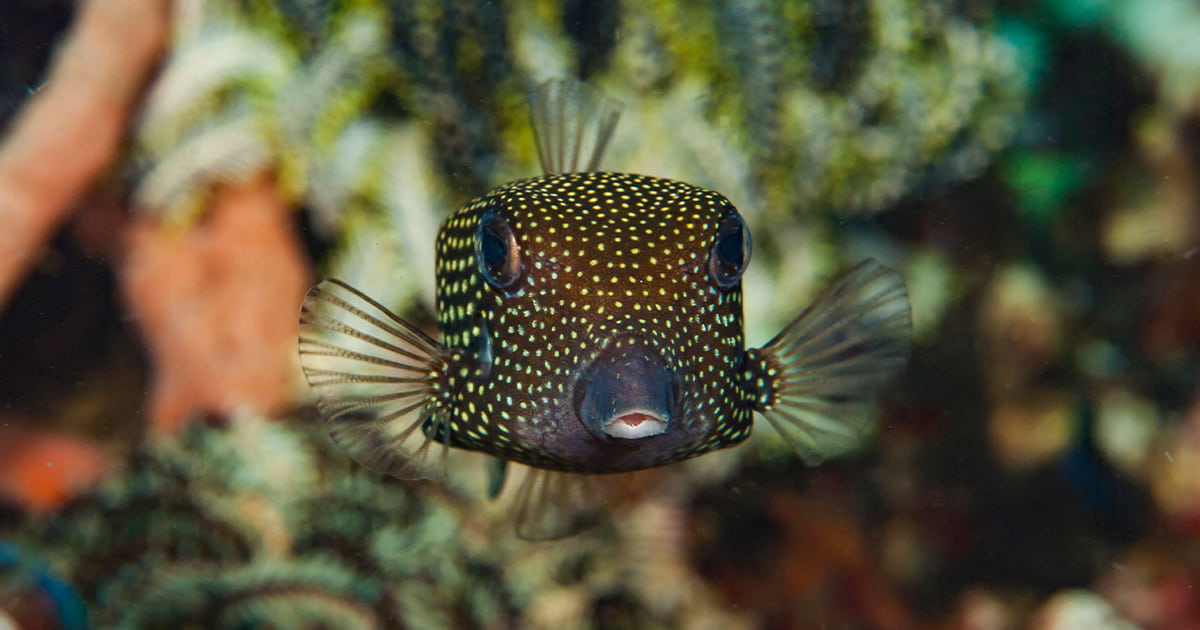
They dress to impress potential mates.
Female whitespotted boxfish are tastefully dressed in black with allover white spots. Males have the same spotted back, but their sides are adorned with flashy colors—vivid blue with bright yellow bands and spots, the fish version of a custom-made, multi-hued suit. After all, it’s showtime.
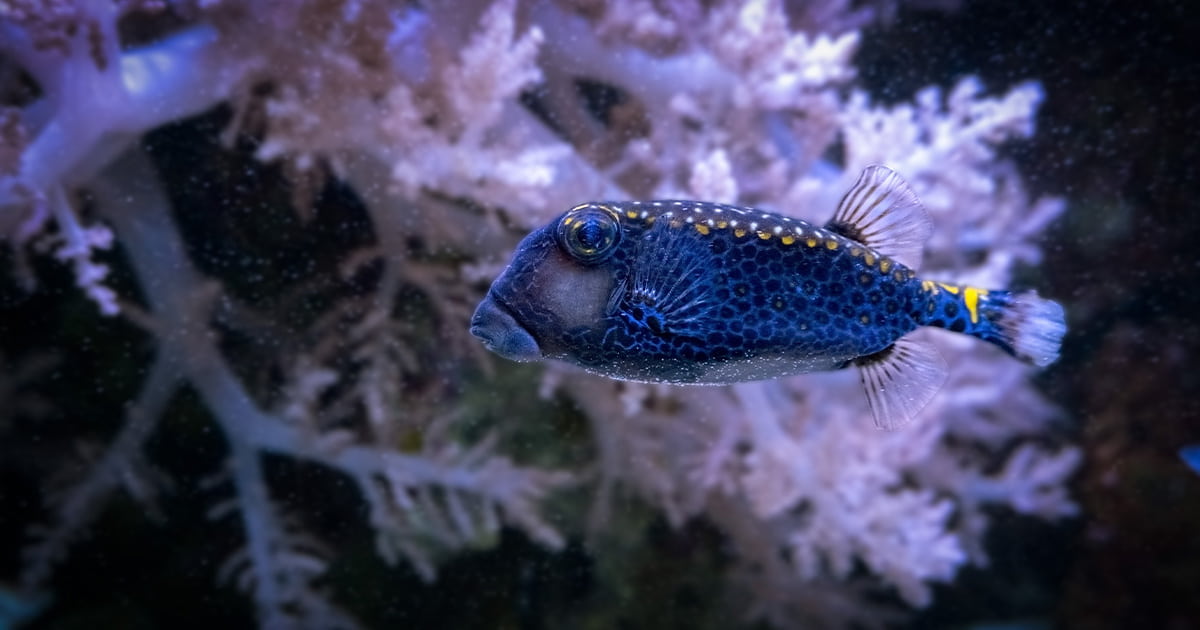
Look for our two SEAlebrity whitespotted boxfish, Polka and Dot, at the Seattle Aquarium in the Pacific Coral Reef habitat!
River otters: work hard, play hard, nap when needed.
Where there’s ample water, land and fish, chances are you’ll find North American river otters. Lontra canadensis thrive in both marine and freshwater habitats, frolicking in coastal estuaries, marshes and streams, as well as inland swamps, lowland marshes and small lakes. Although they can be shy with people, you might be surprised by what we have in common with these gregarious animals.
Here are two ways they’re just like us!
They like a good nap.
If you don’t see the river otters in our care at play, they’re probably napping in their den. Can you spot them? Depending on the time of year and where they live, river otters may be diurnal (more active during the daylight and less at night); nocturnal (more active at night and less during the day); or crepuscular—meaning most active at twilight! Regardless of when they keep busy, after hours of hunting, playing, building their dens and planning escape routes, a quick snooze is just the ticket.
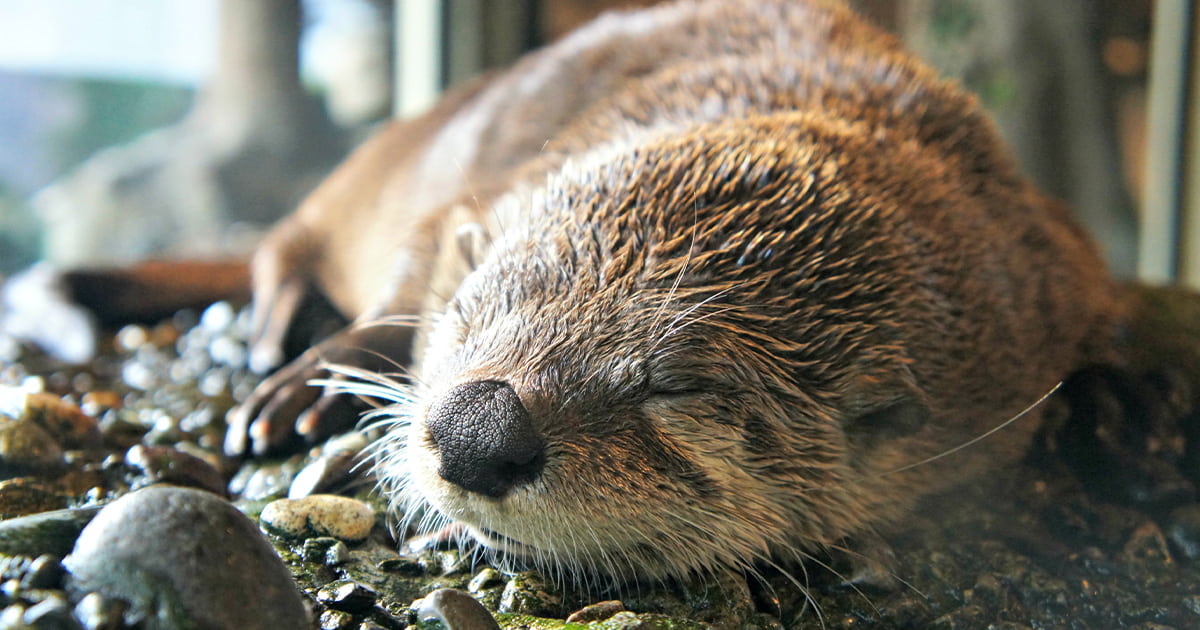
Fun is having buddies to play with.
Otters like to socialize and when they get together it’s all about fun! Watching them speed through the water, slide down riverbanks and wrestle each other is very entertaining but this is not just play. The otters are learning and practicing survival skills that also build bonds among the group.
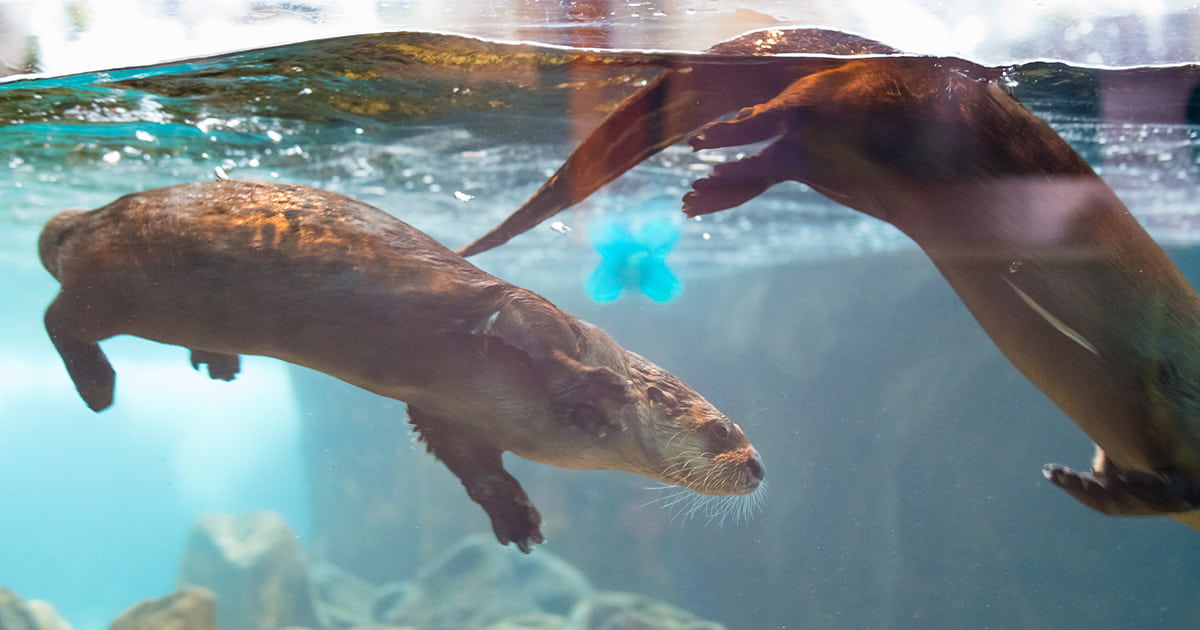
Don’t miss our SEAlebrity duo, Molalla and Ahanu, in the Aquarium’s river otter habitat!
The biggest threat to marine animals? Us.
You can make a difference for giant wrymouths, whitespotted boxfish and river otters. For them, there’s no hiding from trawling nets, diminishing habitats, climate change and plastic pollution. Whether or not they’re on the International Union for the Conservation of Nature Red List of Threatened Species™, human-caused impacts are a threat to their survival. Every animal in the ocean needs a healthy habitat to thrive—just like you do. Visit our Act for the Ocean page to learn what you can do to help preserve the health of our marine environment.
